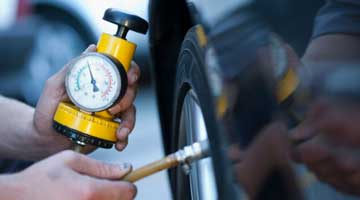Car windscreens weren’t always as hardy as they are now. Laminated windscreens only became a popular sales feature in the 1980s, as manufacturers and consumers began realising the importance of safety.
Today’s windscreens can shrug off stone chips and hailstorms in ways that would have seemed incredible 30 years ago. However, they still require care and maintenance to prevent cracks or scratches that might need repair. In this article, we look at three key areas of car maintenance and repair – de-icing, wipers, and overall vision.
De-icing
Almost every motorist will be familiar with attempting to scratch compacted ice or snow off the family car. Windscreens are particularly susceptible to accumulating snow because they slope less steeply than side windows, but it’s essential to fully clear them before setting off.
The quality of de-icer sprays can vary quite substantially, but plastic trigger bottles (as opposed to aerosols) are usually a safer bet, as the spray is more resistant to wind. Always spray de-icer before using a scraper so the chemicals can set to work, and avoid using credit cards as substitute scrapers, since their sharp edges can scratch the glass.
Try to wear gloves for comfort, and never pour hot water onto an icy window, as rapid temperature changes may crack the glass.
Wipers
Windscreen wipers lead a hard life: these flexible rubber blades are responsible for pushing water droplets off a curved expanse of glass, which inevitably causes wear and tear along the blade edges. Cracks caused by cold weather and scratches from detritus are other common perils for wiper blades.
Wipers should be replaced once a year as part of regular vehicle maintenance, although modern silicon blades may last longer. It’s also important not to prematurely damage the wipers by using them to sweep away hard debris, and it’s best to lift the arms up so that the blade isn’t in direct contact with the windscreen.
Maintaining vision
An obscured windscreen is a safety risk and potentially a motoring offence, while opticians will confirm that squinting through a dirty window can cause headaches and eye strain – so having unobstructed vision is essential for safe and responsible driving.
Regular use of windscreen washer fluid is a good start, so keep the reservoir topped up. However, you should never use the spray in sub-zero temperatures, when frozen washer fluid may damage the pump or cause cracks in the jet nozzles. A pack of screen wipes is a handy glovebox accessory, ideal for removing condensation or dust/debris inside the windscreen, which can help to reduce glare.
Finally, it's best to get small scratches and chips repaired before they become a bigger issue, particularly if you're planning to put your car through an MOT – any damage over 40mm in size (or 10mm if the damage is in the driver's direct line of vision) could result in a fail.















